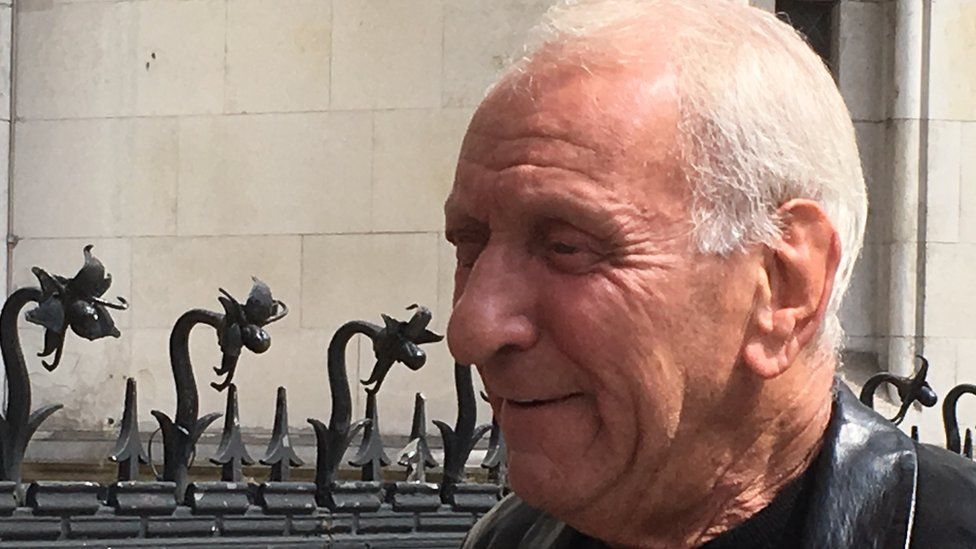Gun in Paul Cleeland murder trial 'did not kill victim'
- Published

A forensic report on a murder in 1972 has proved the gun relied on at trial did not kill the victim, lawyers claim.
Independent expert Dudley Gibbs has reviewed the case of Paul Cleeland, of Kent, who served 25 years for shooting Terry Clarke but always denied it.
The report, commissioned by Cleeland's lawyers, precedes a judicial review of a Criminal Cases Review Commission (CCRC) decision not to allow an appeal.
The CCRC could not comment ahead of the judicial review, which it contested.
Since 1998, the CCRC has refused five applications to refer Cleeland's case to appeal - the fifth application was made by Folkestone and Hythe MP Damian Collins who believes his constituent's case could be "one of the last great miscarriages of justice from the 1970s".
The CCRC revisited its first refusal and went on to refer the case to appeal in 2002 but Cleeland's legal bid failed.
His first appeal had also failed in 1976.
Cleeland has always insisted he was at home with his wife when Mr Clarke was killed in Stevenage, Hertfordshire.
The suspected gangland boss was shot with two rounds, one in the back and one in the front, outside his home in the early hours of Bonfire Night.
About 10 hours later, parts of a gun were found nearby and the barrels contained two spent Blue Rival cartridges, jurors heard in 1973.
Cleeland, a painter and decorator, had represented himself at a retrial that ended in a life sentence.
Mr Gibbs, who has worked on a series of papers on the case, was asked by Cleeland's defence team to review a pathology report from 1972.
His latest report, produced in January, said: "Given that the shot size of the pellets in the body was No 7s, the No 6 shot in the Blue Rival cartridges found with the Gye and Moncrieff (G&M) shotgun did not kill the man."
The forensic expert disputed an earlier study which he said had "assumed" all the pellets were No 6 shot.
He concluded there was "a high probability that the murder weapon was different from the one cited" - but Cleeland's lawyer, Ricky Arora, said the report "proves beyond any doubt that the shotgun relied upon at trial did not kill Terence Clarke".
The CCRC declined to comment while proceedings were continuing.
However, the BBC has seen the CCRC's grounds for contesting the judicial review, which said the scientific evidence never did make a link between the gun and the murder, and added: "The evidence is unchanged."
The CCRC document said: "There is no complete proof that the G&M gun fired the wadding found at the scene. However, the totality of the evidence does provide a link between the gun, the claimant and the murder."
Cleeland's judicial review is due to be heard in April.
- Published20 November 2018
- Published12 October 2018
- Published12 July 2018